Delicious, fragrant and healthy fruit, nectarine, is known for a long time. It has a number of advantages and advantages, compared with the usual all peach. And although nectarine was previously considered the inhabitant of only the southern regions, a number of frost-resistant varieties were revealed to cultivate nectarine in almost any regions of our country. The yield, the hardy culture "fell to taste" by many gardeners. All questions and secrets of growing nectarine - in this selection of material.
Tree Nectarine, Botanical Help
- Nectarine is one of the subspecies of an ordinary peach, the main difference of which is smooth glossy skin.
- The versions of the origin of fruit culture, nectarine, differ. For one of them, nectarine is a complex interspecific hybrid, long-distance relatives of which (besides peach) are fruit trees such as: plum, almonds, apple trees, pear, Alycha, Quince, Apricot, etc. According to other data, nectarine - the result of natural mutation peach tree in the process of his self-pollen.
- Name nectarine comes from the word "nectar" and very eloquently characterizes the "sweet advantages" of nectarine fruits. Indeed, the fruits of the plant contain an increased amount of natural sugar.
- The plant nectarine is a tree height from 3 to 7 meters, with a crown reaching no more than 4 meters in diameter.
- The nectarine leaf is an extended lanceal form, with cloths along the edges, resembles a peach leaf plate.
- The blooming spring nectarine is as well as peach, pleases those surrounding unusually beautiful pink flowers. The inflorescences of nectarine are revealed before the appearance of foliage, and during this period, the tree looks very impressive and attractive.
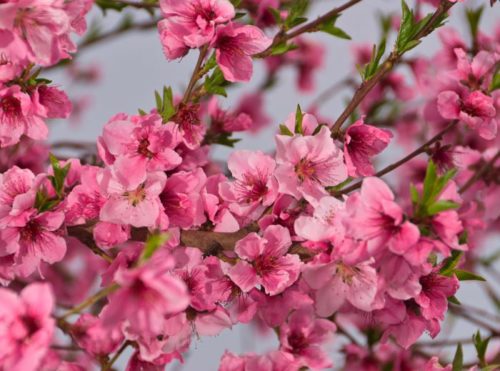
- The fruit nectarine is similar to his relative - peach, but it has absolutely smooth and even slippery skin. The painting of fruits can vary depending on the variety and be light yellow, reddish, greenish yellow, reddish yellow or burgundy-cherry. The pulp of the fetus nectarine is dense and juicy, the bone is discharged and not separated. The aging period of fruit is about 4 months.
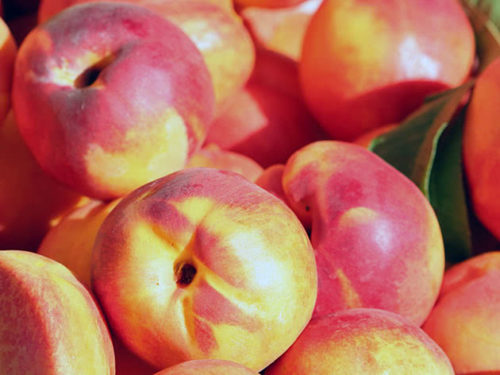
- Nectarine is a thermal-loving culture, although there are currently quite many varieties of nectarine of high frost resistance.
- Adult tree nectarine calmly transfers winter frosts to -33 0C, but flower kidneys die already at temperatures -20 0WITH.
- Nectarine, in contrast to peach, is considered more enduring and resistant to a number of diseases by the plant.
- Nectarine is characterized by sideline - because the first crop of fruits is obtained already in 3-4 years after planting seedlings into open ground. The life expectancy of the Nectarin tree is about 20-30 years.
Tree photo Nectarine:
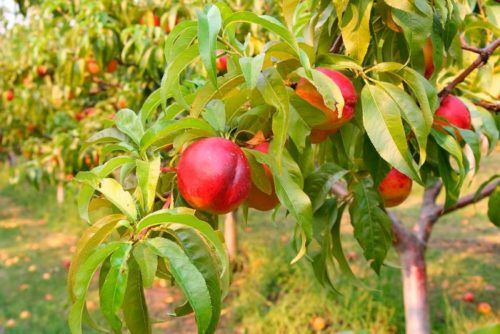
Nectarine, interesting facts
- In China, Nectarine is known for more than 2 centuries. In Europe, fruits won their popularity only in the 20th century, when large-scale varieties of nectarine were bred.
- Nectarine is a useful and delicious fruit with a lot of advantages and positive qualities. The average yield of nectarine fruit is 30-50 kg from one adult tree.
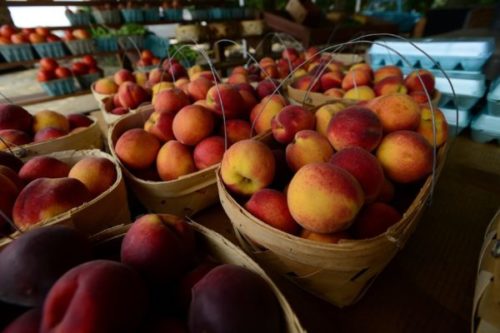
- Sweet and juicy nectarine fruits contain glucose, sucrose, organic acids (wine, lemon, apple, ascorbic), vitamins "A", "C", polyphenols and antioxidants.
- The use of nectarine fruits contributes to the retention of moisture in the body, the rapid absorption of oily or severe food, normalizes the increased gastric acidity, removes toxins and slags from the body. Positive effects of sweet fruits have both a cardiovascular system.
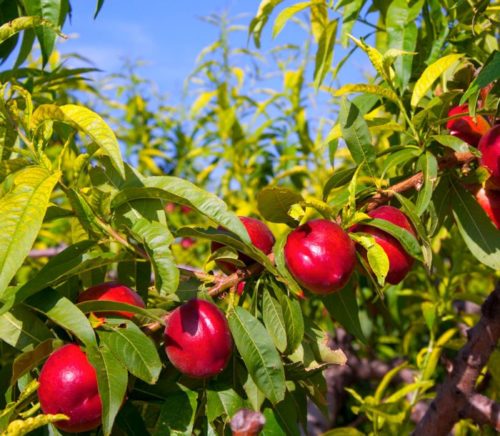
- Evenased people are not recommended to use a large number of nectarine, as the fruits are capable of increasing blood sugar content. Caution should be used to eat fruit people (especially children up to 6 years old), suffering from allergic reactions.
- Nectarine fruits are used both in fresh form and in recycled. From fruits prepare jams, sweet desserts, compotes and jams.
- Nectarine seed oil is widely used in cosmetology and pharmacology.
- Nectarine is an excellent honey, attracting bees during its violent and bright flowering.
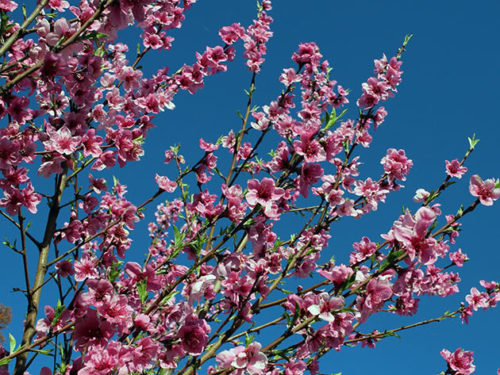
Sort Nectarin
There are early, secondary and late satrin varieties. In addition to the thermo-loving varieties, nectarine varieties of increased frost resistance are also derived, successfully grown, for example, in the North Caucasus or in the Volgograd region.
Consider the most famous Nectarine varieties with different maturation terms.

Early varieties Nectarin
- Nectarine "Fleming Fury". Superrazny large-scale Nectarine variety, "leaving" from America. Fruits with a red blush, gentle and juicy flesh of yellow.
- Nectarine "Big Top". Unpretentious and high-yielding early grade of American origin. Fruits are large (up to 200 g), a rounded shape, a saturated cherry-bard shade. The flesh is dense, juicy, yellow, which by the bone acquires a reddish hue. The bone is poorly discharged. The taste of fruits is sweet, honey, with light pleasant sourness.
- Nectarine "Ruby 4". Scrolling, high-yielding grade with good transportability. The weight of the fetus is about 200 g. The flesh of juicy, gently fibrous, yellow, with pale painting, colors. The bone is separated badly.
- Nectarine "Rem 028". Cold-resistant, yield, minor grade, resistant to many diseases. The result of Italian breeders, ripe nectarine fruit reaches a mass of about 200 g. The fruit of a rounded form with a slight elongation, yellow with red "barrels". The flesh is dense, sweet, juicy and fragrant.
- Nectarine "Caltese". Italian high-yielding grade, with large round fruits covered with yellow-red skin. The flesh is bright (practically white), juicy and dense.
Association of Nectarin
- Nectarine "Stark Rad Gold". American high-yielding variety, with large fruits of a rounded form, reaching more than 200-240 god of rich wine-red. The flesh is fibrous, dense, bright yellow (with painting near the bone), easily separated.
- Nectarine "Wang-3". Troubleshide, resistant to diseases, the yield variety of American breeders. Skin painting - bright red with yellow fragments. The flesh is dense, shuffling, yellow. The grade has increased cold resistance.
- Nectarine "Alitop". Italian high-yielding grade, characterized by large rounded-oblong red fruits and weight up to 250 g. The nectarine nectarine flew with red streaks, dense, fragrant and very tasty.
- Nectarine "Harco". The yield, winter-hard-resistant and resistant to most diseases variety derived by Canadian breeders. The fruits of rounded shape, not large size, olive yellow color with a burgundy violet blush. The flesh is sweet with light sourness, juicy and fleshy. The bone is easily separated.
- Nectarine "Ishunsky". Ukrainian grade with small (up to 150 g) fruits of yellow-red. Tender, fibrous and juicy flesh painted in yellow with red streaks. The bone is well separated from the pulp.
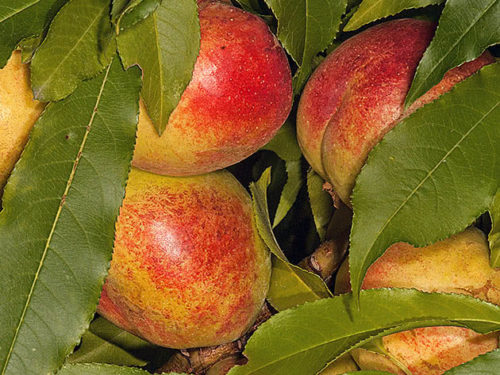
Late varieties Nectarin
- Nectarine "Poseidon". Grade with small (80-100 g) rounded yellow fruits and carmine strokes. The flesh of juicy, yellow and red streaks. The bone is easily separated.
- Nectarine "Harblees". Dessert variety, characterized by oval fruits of yellow-red. The pulp is also yellow, very juicy, sour-sweet. The bone is easily separated.
- Nectarine "Sweet Lady". Highly resistant to disease varieties derived by Italian breeders. The fruit is large (up to 300 g), yellow color, with a carmine - red blush. The pulp is characterized by high taste, dense and firm. The bone is easily separated from the pulp.
- Nectarine "Septtember Qwin". Lovely variety, with fruits of light green color and burgundy blush. The flesh is fragrant, dense, sour-sweet taste. The bone is easily separated.
- Nectarine "Evpatoria". Grade of Crimean breeders, with yellow-red fruits. The flesh is juicy, fibrous, yellow, passing around the bone in pink shades. The bone is easily separated from the pulp.
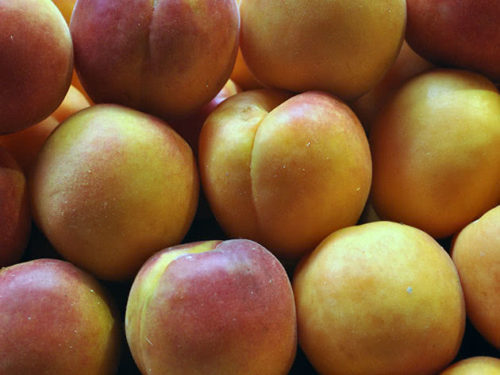
Landing seedlings Nectarin
Nectarine can easily grow, putting a young seedling tree. Consider all the advantages and disadvantages of growing nectarine through ready-made seedlings.
By purchasing seedlings in garden stores or specialized nurseries, it is better to give preference to annual copies of zoned varieties of nectarine, i.e. those who adapted and grow well in your climatic zone.
When buying, the seedlings are inspected so that the plant is absolutely healthy and intact. The roots should not have dry or rotten parts, and the vaccination place should look even, without the "influx".
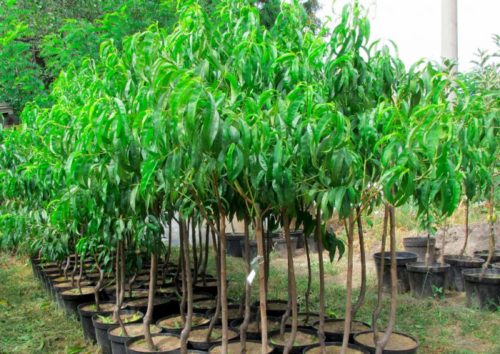
Time landing Nectarin
- In the southern regions, the autumn landing of nectarine is considered preferable, in the northern, on the contrary, it is better to plant a culture in the spring. This "neglected" rule is explained by the fact that a young seedling needs a certain time for successful rooting. In a hot climate with a fleeting spring, seedlings are difficult to adapt to the onset of heat, and the plant "enters" in a hot summer is not faster and weak. In the northern climate, on the contrary, a long soft spring allows the young plant to completely graze and root in a new place. Then nectarine will develop as much as possible in the summer and will be able to silently survive the cold winter.
- In regions with a warm, consistently temperate climate, nectarine is planted both in spring and autumn. In these regions, the landing time does not play a significant role.
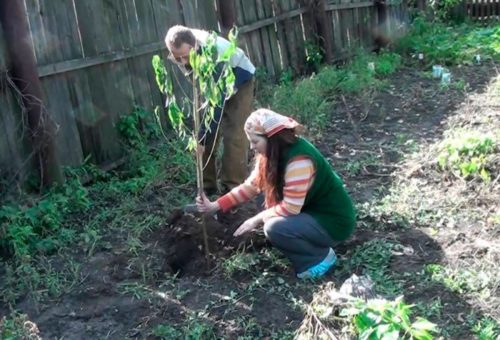
Place of landing nectarine
- Heat and light-loving nectarine prefers open, sunny, windless places, better from the south side of the site.
- Culture prefers light fertile soil. The best soil for nectarine will be loam or sovers. Extremely undesirable for the plant is heavy clay soil. Wetlands, raw terrain and sections with slow warming (lowlands) are also not suitable for nectarine cultivation. In addition, the fruit culture does not tolerate saline soil.
- It is not necessary to plant nectarine on sites with close grounds of groundwater, as well as in the garden, where it was cultivated by bulk or grated cultures, strawberries or legumes (clover, alfalfa). After these plants, there is a big risk of nectarine infection with such a fungal disease as verticillosis. For the same reason, nectarine is not recommended to plant close to peach. Common diseases and pests can cause irreparable harm to a young rapid plant.
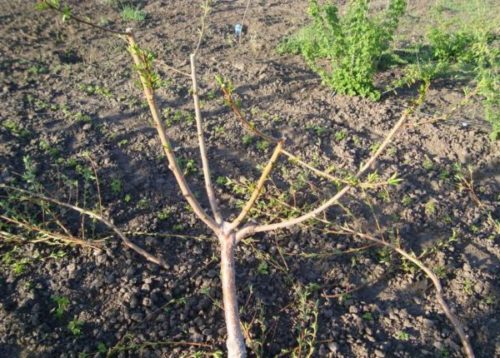
Agrotechnology landing nectarine
- Place for landing nectarine is better to prepare in advance, in the fall. This concerns the planting of the tree, both in the autumn time and in the spring.
- For 2-3 weeks before the autumn planting, the landing pit is preparing, about 60-70 cm in all parameters (width, depth). In this case, the removed the upper layer of fertile land is postponed to the side.
- A pegs of about 1.5-2 meters are inserted into the pit center, which in the future will serve as a reliable support of the growing tree of nectarine.
- The top layer of the soil (deferred) is mixed with fertilizers (a bucket of the recovered compost and 100 g of superphosphate), after which half of the prepared mixture is poured into the landing pit (hilmik).
- Nectarine seedlings put on a slide of land in the center of the landing pit, we can grow all the roots and fall asleep with soil.
- After landing, the soil is sealing, and the seedling is tied to the peg. Then the village is abundantly watered with water (4-5 buckets per seedling), and the shoots are cut off, shortening the central conductor for 15-20 cm, the side shoots are half the length.
- With the right landing, the seed vaccination place should be located at one level with the surface of the Earth.
- Subject to the landing of nectarine in the fall, the trunk is dipped with dry ground (20-30 cm high), and the rolling circle is mounted for the winter with a compost, 10 cm high. With spring landing, these events are not conducted.
- If several nectarine seedlings are planted in the garden, retain the distance between the copies of 2-2.5 m, between the rows - 3-3.5 m.
- After planting seedlings, the nectarine tree begins to be froning about the 3-4th year.
Nectarian care
Nectarine in the garden, like any other fruit plant, requires care and attention. The main agrotechnical activities include: watering, loosening, feeding, tree trimming and plant preparation for winter.
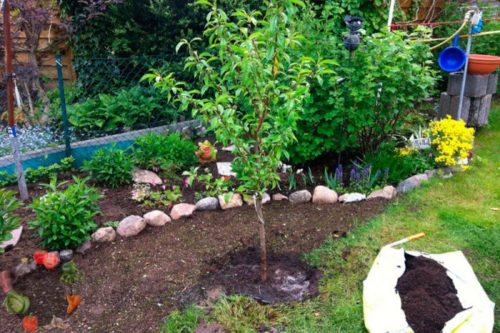
Watering and loosening nectarine
- Moofable nectarine needs regular, but not too frequent irrigation. For the entire growing season, the nectarine tree is watered about 4-6 times.
- Excessive watering or stagnation of moisture leads to the root of the root tree of the tree.
- Watering rates depend on the climatic conditions of the region and the number of natural precipitation. On average, one plant for one watering requires about 40-80 liters of water, depending on the size of the tree.
- Especially important irrigated immediately after landing to ensure successful rooting of the seedling.
- The first watering during the aging of fruits is carried out when the bone in the fruits hardens. Otherwise, untimely (early) irrigation can lead to the cracking of nectarine fruit.
- Experienced gardeners are recommended to wipe the nectarine tree 1 month to full ripening of fruits. So you can achieve an increase in the size of the fruits by 1 \\ 3 and increase the sugar content of the fruits. At the same time, until the harvest is harvested, the plant is no longer worthwhile.
- But after collecting the crop nectarine, it is necessary to pour again. So the tree "pulls out forces" to bookmark flower kidneys for the next season and can painlessly "survive" wintering.
- To keep the wet microclimate longer, the rolling circle is better to climb.
- In the absence of a mulching layer, the soil after watering loose.
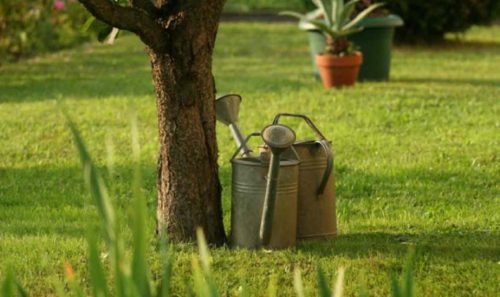
Upborm Nectarin
- If, when landing nectarine, a sufficient number of fertilizers was made to the landing pit, it is starting to feed the plant only for 2-3 years after landing.
- In the spring tree feed nitrogen-containing fertilizers. The rational of all use 7% urea rr, which, in addition to nitrogen feeding, will help prevent against the insect pests and causative agents in the soil or cortex. When working with urea, it is important that the kidney nectarine does not swolley and did not reveal. Otherwise, the risks of their death from the burns received.
- During the period of active growth and aging fruits, a sheet feeding of a plant with a solution of potash fertilizer is practiced. So it is possible to get more sweet and bright (in color) nectarine fruits.
- Good results also gives such a composition of the extraxornal feeding: 150 g of the hydrophosphate aqueous exhaust, 60 g of ammonium sulfate (or urea), 50 g of potassium chloride (or potassium sulfate), 10 g of boras and 20 g manganese dissolve in the 1st Water Bond (10 l). If the feeding is carried out at the stage of ripening fruit, nitrogen and the boor are not used.
- For all the time of vegetation nectarine tree feed about 2-3 times. At the same time, organic fertilizers are made no more than 1 time in 2-3 years. As for the qualitative composition of the feeding, for nectarine, such a sequence is observed: spring apply nitrogen-containing fertilizers, and in the summer and autumn - complexes with the predominance of phosphorus and potassium.
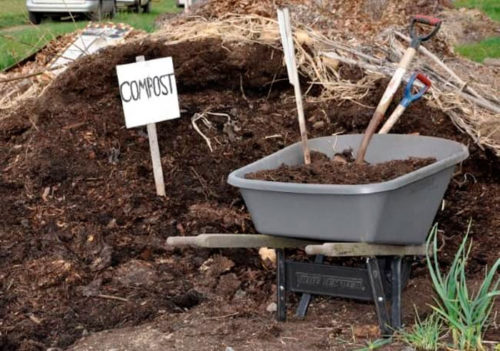
Nectarine diseases and pests
- Nectarine as well as a peach may suffer from diseases such as: abbeiorososporiosis, flourous dew, leaf curlyness, fruit rot (including gray), verticillosis, cytospose, pasta, cockel, Milky shine and mushroom burn.
- To combat fungal infections, these drugs can be used as: "Topcin M", "Vectra", "Sorrow", "Topaz", "Staters". In the case of nectarine infection with viral or mycoplasma diseases - you will have to destroy the patient plant so as not to infect other instances.
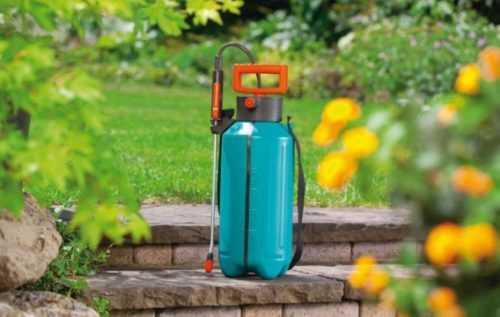
- The emergence of such a disease, as the curl of the leaves, provokes the temperature regimens, protracted dampness and a long cold. This disease significantly reduces the number of floral kidney laid plant. In the fight against curly, nectarine well established itself such a drug as "dellant" or "chorus".
- With a slurryosospieriosis, a triple degree of treatment is used: during the swelling of the kidney, copper is used, before flowering and after it - the drug "Topcin-M" will be needed.
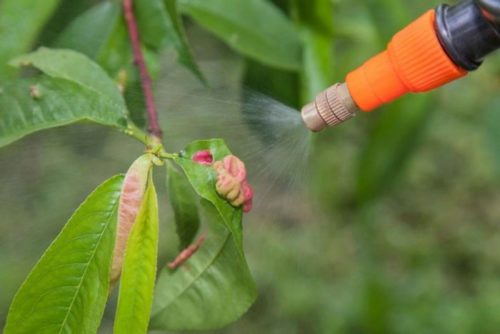
- Puffy dew is manifested by the advent of the whites on the leaves of nectarine, which inverse and die away over time. For the prevention of the disease, the swollen buds of the plant spray with 2% copper vigorous or burglar liquid. In the case of severe damage, fungicidal preparations (quadris, Topaz, etc.) will be needed.
- To avoid the manifestation of the above-mentioned diseases, it is best to implement preventive measures that promote the development of a healthy tree.
- Nectarine may be subjected to pest insect attacks. Among the most common pests can be called such: fruit, shield, wave, mole, weevil, tick. Insecticidal preparations ("Chlorofos", "Carbofos", "Aktara", "Aktellik", "Inta-Vir", "Mospilan", etc.) are used in the fight against insects.
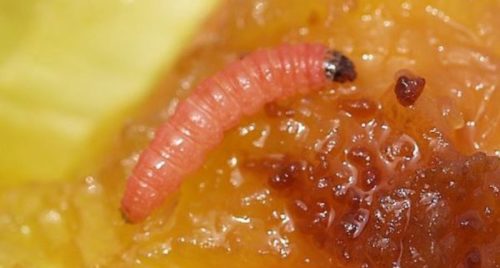
- As preventing pests, early spring, on swollen kidneys, nectarine (approximately in April) is treated with "carbofos". In the phase of the appearance of the tip of the leaves, the trees are additionally sprayed with a 3% rum burgue fluid.
- After the formative trimming, during the appearance of buds, the plant is subjected to antifungal treatment with polycarbacin or "belant" by combing them with such drugs from pests, such as "Fosalon" or "carbofos". After flowering, this processing is repeated.
- In the autumn, after the leaf fall, the nectarine tree is recommended to treat copper vitrios, after which repeat the spraying "nitrafen". An alternative to double processing of the plant will serve as a use of 7% of the urea.
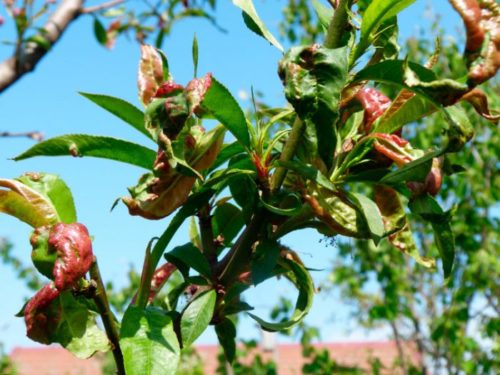
Pruning Nectarin
- The nectarine tree needs a mandatory trimming: forming a crown and sanitary.
- Considering that nectarine fruiting occurs in annual growths, the task of the annual (first 4-5 years) forming trimming is to ensure the growth of annual shoots and prevent the proceeding shift to the edge of the crown.
- Forming trimming is carried out in spring. Crop nectarine most often, forming so-called. "Bowl" (without a pronounced central escape) so that the light-loving nectarine get a maximum of light, it was convenient to care for a tree and collect a harvest.
- The trimming technique is as follows: In the 1st year, 2-3 skeletal escapes (with a wide angle) are chosen, which shorten up to 10 cm. Every year, during trimming, add 2-3 skeletal escapes. Thus, on last year's skeletal branches, branchifications of first order are formed, on the last year - the second, etc. In the process of forming a tree crown, the conductor will always be above skeletal shoots by 20-30 cm. Upon completion of the crown formation, the conductor is cut to the level of skeletal branches. The height of the strain will be about 50 cm.
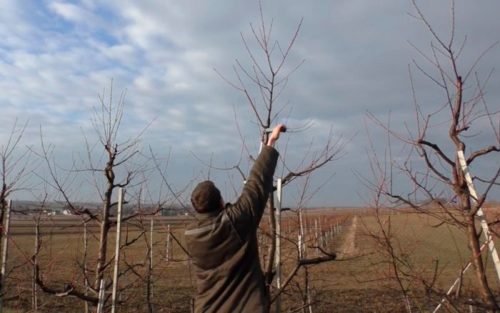
- In the summer, you follow the shape of the tree and cut out vertically growing shoots. For the next year, skeletal branches embraced in Crown of Peach so that they were the same length. Soothes that grow up in summer on skeletal branches and strains are removed, leaving up to 10 cm.
- Practicing and brassy trimming of a tree, when skeletal shoots depart from the trunk very low (at the land itself). This type of trimming makes it possible to determine the growth of the tree.
- With sanitary trimmer, spent more often, remove dry, damaged, frostbed and thickened (growing inside) shoots.
- After flowering and squeezing, the zinc is carried out normalization of the load of the fruit, when 10-20 cm of shoots are left over the 1st fruit, and the rest plunder. This technique avoids excessive load on the tree branch after the aging of nectarine fruits. In addition, the remaining fruits will be large and sweet.
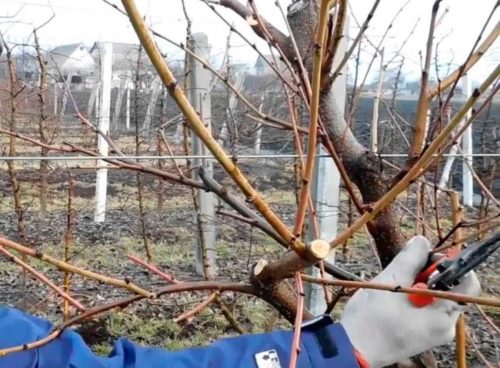
Preparation for winter Nectarin
- In the fall, after the leaffall, all the foliage where the pests can be collected and burned. After cleaning, nectarine is abundantly watered, fertilize and mulched with a layer of about 25 cm. The mulch is used by humid, straw, tops, sawdust or peat. Mulch should be laid in dry weather to avoid the reinforcement of the root cervix.
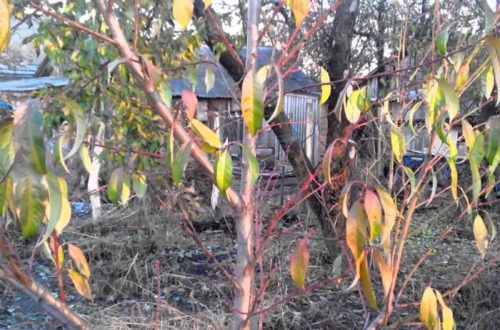
- The trunk and the base of skeletal shoots of the Nectarin tree for the winter are treated with lime. Shelter nectarine trees only with the "arrival" of frosts.
- Young seedlings nectarine are subject to shelter for the winter up to 5 years. Adult trees are prepared for winter depending on the climate of the region: in the harsh northern latitudes they are protected by a special underfloor material, in the southern - there will be enough mulching of the rolling circle.
- For the shelter for the winter of young nectarine trees, wooden rails installed vertically near the tree trunk are used. Reiki (together with a seedl) are wrapped with burlap or agrovolok. From above, the shelter is tied with twine, the ground is sprinkled. Additionally, trees can be covered with splashes.
Reproduction Nectarin
Nectarine breeds seeds and with vaccination.
Growing nectarine from bone
Grow nectarine from the bone is easy and accessible to anyone, even a novice gardener. However, with a seed method of reproduction, the risks of obtaining fine-grade seedlings. It is best to plant bones in autumn so that they pass the natural stratification in winter. Consider the technology of growing seedlings nectarine from the bones.
- To begin with, the zoned nectarine fruits are chosen (growing in the same area where landing is planned). The fruit should be large, healthy and ripe.
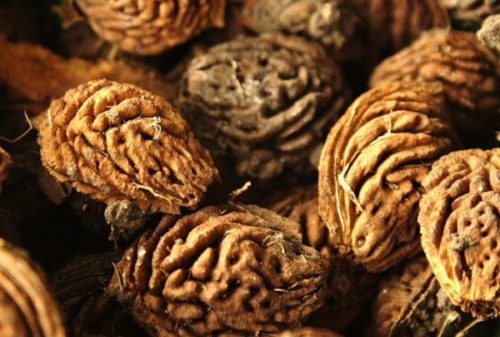
- The bones of selected fruits are soaked for 3 days in the water (at the same time the water is updated daily). After soaking, the bones are dried in the shade.
- Seeds, which planted on an open, solar plot to a depth of about 5 cm are neatly removed from the stones. The interval between the landed bones leaves no more than 20-25 cm.
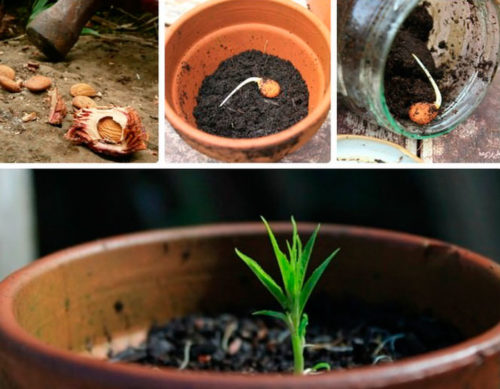
- Landshed in the ground stuffing and mulch. On the eve of winter, the plot is covered with a film.
- In the spring, seedlings need regular irrigation, loosening and feeding.
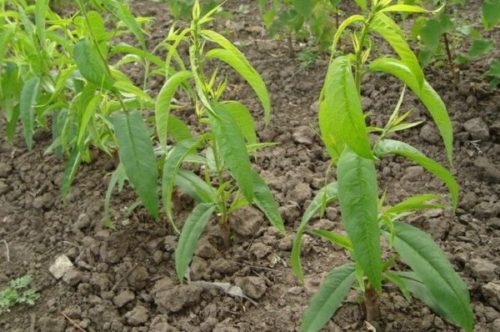
Reproduction nectarine vaccination
The vaccination method allows you to preserve all the varietal signs of the plant. A reliable way is considered to be the eyepiece of the nectarine on the break of peach or almond. When growing nectarine on a heavy wet soil as a collection, it is better to use the seedlings of Plums home or Alychi.
- To successfully instill nectarine, it is necessary to observe a number of conditions: the thickness of the stock must be no thinner of the pencil, and the bark in the place of vaccinations fine and elastic; Taking nectarine should be vaccinated during active inaccation when the bark is easily separated from the wood; The kidney of the lead must be well developed; The eyepiece must be carried out sharply with the sterile tool.
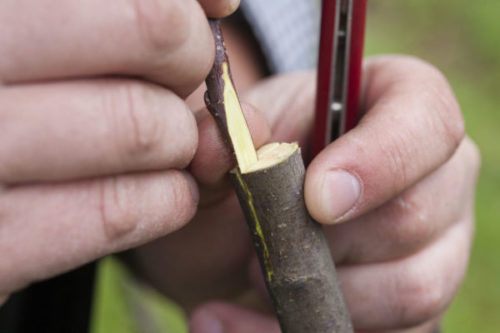
- The cuttings for the lead are prepared in the morning when shoots are most saturated with moisture. The cutken, about 30-40 cm long, remove the leaves and put it into the water.
- At the bottom of the stock, all the lateral growths are removed and made on the purified portion of the T-shaped cortex section, trying not to damage the wood. The transverse section should be 1.5 cm long, and then a perpendicular incision should be 2,53 cm from its middle down.
- In place of the connection of 2 cuts, the corners of the crust on the width of the transverse section are turned away. On the cortex of the cutter make a cross section (12-13 mm long) below the kidney, which is going to transplant. At the same distance, the same cross section is made above this kidney and begin to cut off the bark with the kidney to the lower cut.
- The panel with the kidney is administered under a twin-shaped bore, pressed and tied with a polyethylene ribbon.
Thus, the delicious useful nectarine can easily grow independently. It is enough to comply with the minimum culture care requirements.

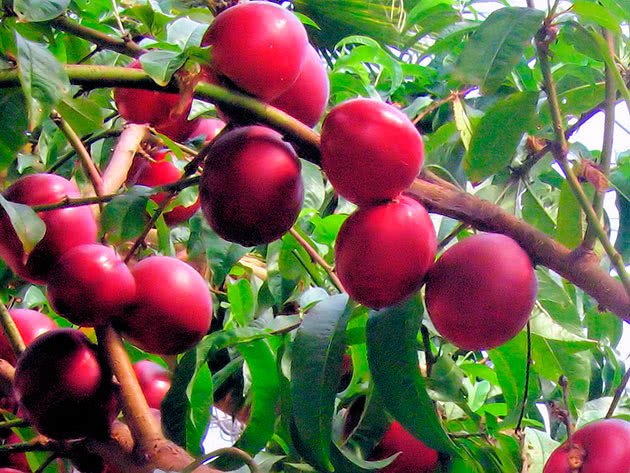
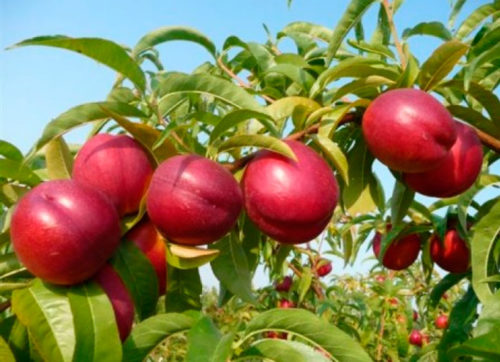
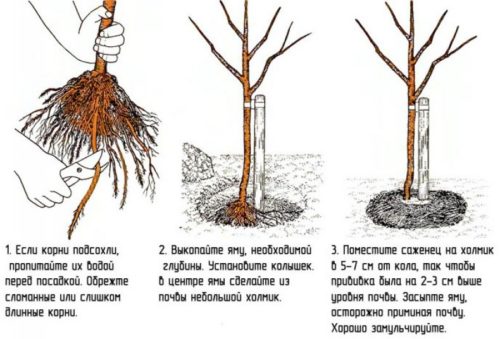
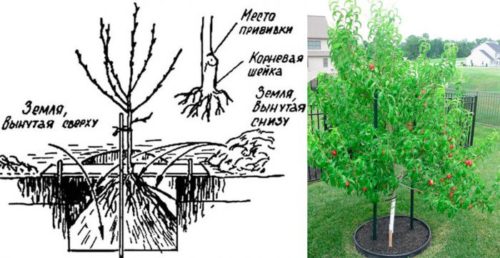
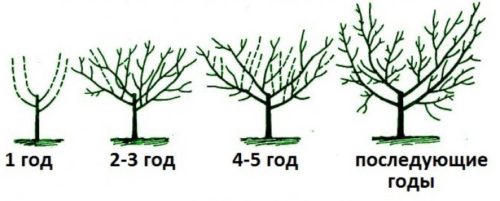
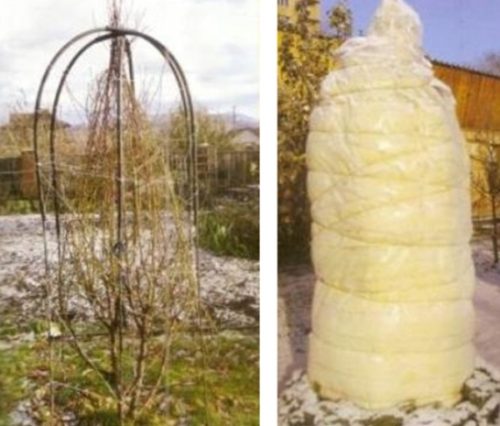
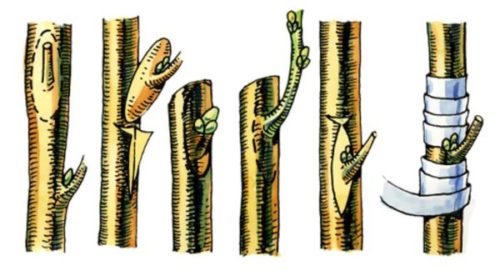
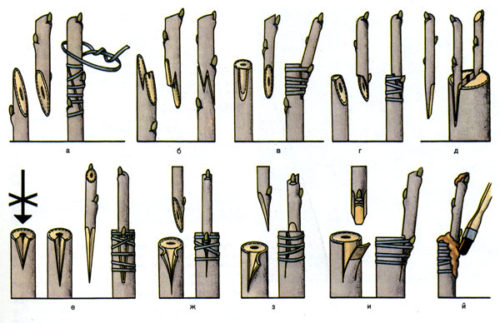
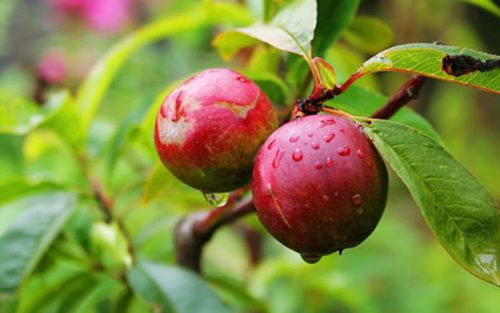
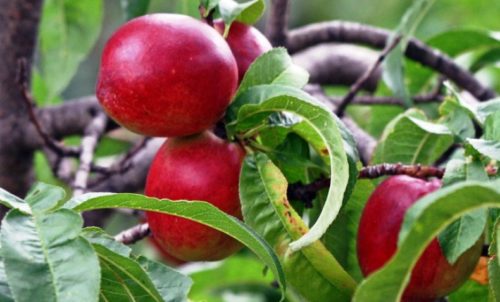
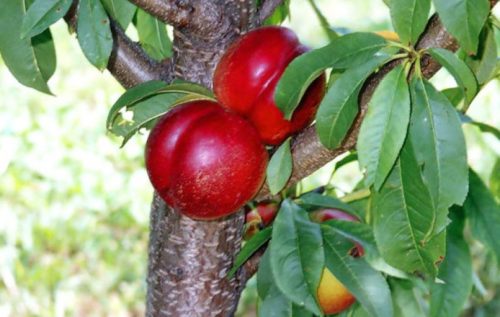
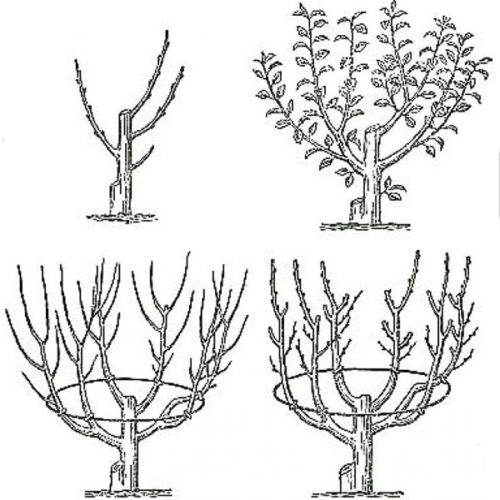
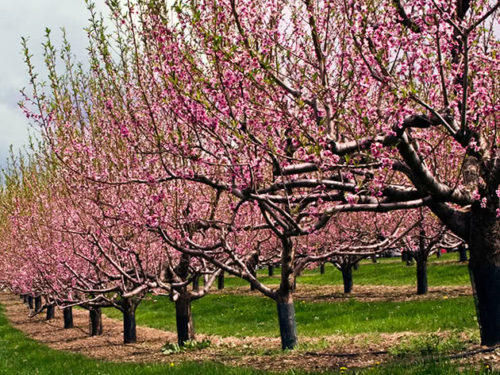
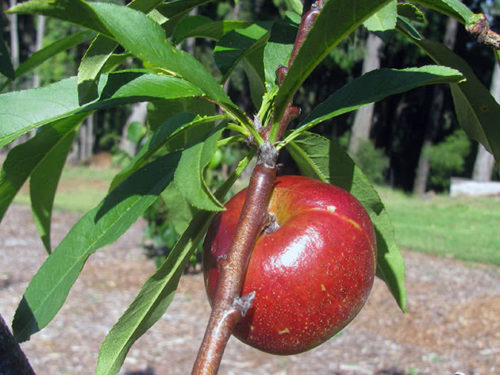


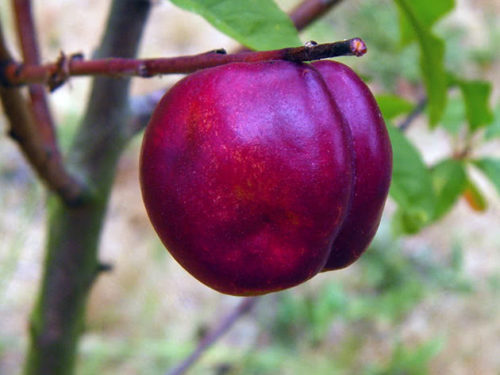












 Start a discussion ...
Start a discussion ...